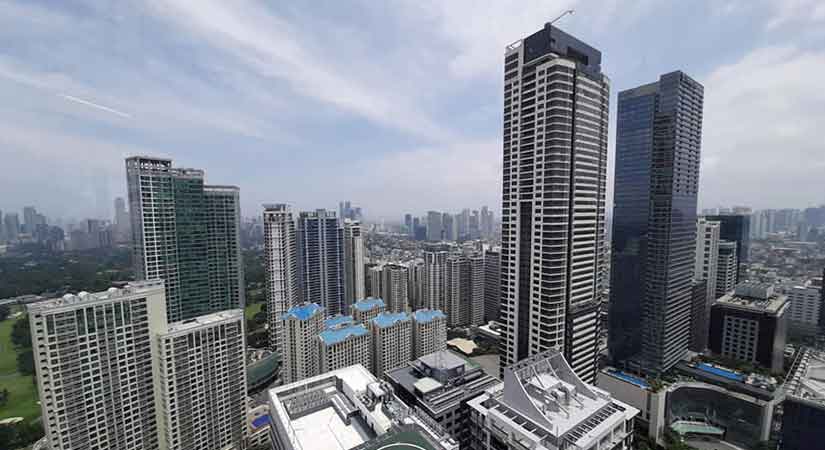Construction spending of 5% of GDP seen as recovery ‘magic number’ — Chua
A CONSTRUCTION spending level equivalent to 5% of GDP will be the “magic number” that will likely drive an economic recovery, Acting Socioeconomic Planning Secretary Karl Kendrick T. Chua, said at a construction industry conference.
Speaking at the forum arranged by the Construction Industry Authority of the Philippines Wednesday, Mr. Chua said he expects a pickup in the sector with the government planning to ramp up spending on infrastructure projects to P1.12 trillion in 2021 and P1.018 trillion in 2022, equivalent to 5.5% and 4.5% of gross domestic product (GDP), respectively.
“The magic number that we are targeting is 5% (of GDP), which is sufficient (for the) economy to rebound strongly. That translates to a lot of jobs,” Mr. Chua said.
“The government is committed to increasing the infrastructure spending as a way to help the economy recover and to stimulate more demand and to prepare the economy for upper-middle-income status,” he added.
Mr. Chua said the National Economic and Development Authority (NEDA), which he heads, supports policies that open up the construction industry to foreign investment and promote more competition.
The Supreme Court recently struck down rules hindering the licensing of foreign contractors. House Bill 7337 also proposes to relax rules on foreign ownership in the construction industry.
“The NEDA supports, in principle, (policies that will) open the sector to more competition so we can get the best value for the people in terms of quality… In general, the position of NEDA is to have a more level playing field across industries, across size, across industries, and nationalities, subject to the usual caveats,” he said.
This year, however, Mr. Chua said infrastructure spending has been lower than usual due to budget cuts after funds were realigned to fund urgent pandemic spending. The budget for infrastructure for 2020 was cut by 21% to P785 billion or 4.2% of GDP. The initial budget was P989 billion.
Government spending on infrastructure fell 33% to P153.5 billion in the third quarter, but exceeded the reduced target for the period by 12%.
He said the construction industry overall should post a stronger rebound in the fourth quarter after posting a 39.8% year-on-year decline last quarter.
The sector has been a major contributor to economic growth, he said, with construction gross fixed capital formation accounting for nearly P3 trillion in real terms, or 1.8 percentage points of the 6.6% average GDP growth over the past four years.
“It is important to see a more solid recovery especially in the last two years (of the administration),” he said.
He said new jobs generated by the industry next year will be substantial, with government infrastructure projects in themselves creating 1.7 million direct and indirect jobs.
To address the funding needs of construction companies, First Metro Investment Corp. Chairman Francisco C. Sebastian said more firms should tap the capital markets to raise funds for expansion by issuing shares or bonds.
Mr. Sebastian said the financial sector is ready to support the industry, but companies have had “very little involvement” in the stock and bond markets.
He said there are only four publicly listed construction companies — DMCI Holdings, Inc., Megawide Construction Corp., D.M. Wenceslao & Associates, Inc., and EEI Corp. — out of the 274 listed companies on the bourse.
He said overall, fundraising via corporate and government bond issues as well as preferred shares rose 83% from a year earlier to P1.155 trillion in the first nine months of 2020 despite the COVID-19 pandemic. He said the total could double the year-earlier level by year’s end.
“Being a public company can become a realization of your vision, and could open your company not just to long-term sustainability and financial success but even future growth well beyond the construction business,” Mr. Sebastian said.
Speaking at a separate forum Wednesday, BDO Capital and Investment Corp. President Eduardo V. Francisco said banks have enough capital and the financial markets are awash with cash to fund big-ticket infrastructure projects, after the Bangko Sentral ng Pilipinas cut benchmark interest rates and their reserve requirement ratios.
“Maybe the question more is are there enough projects and are the projects bankable… projects have to be bankable and feasible unless there’s a government guarantee because if the government doesn’t give a guarantee, why will (investors) put up their equity, when there’s not enough usage, there’s not enough support?,” Mr. Francisco added. — Beatrice M. Laforga with Jenina P. Ibañez


